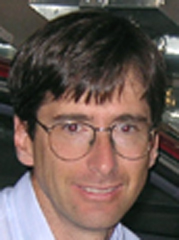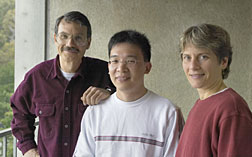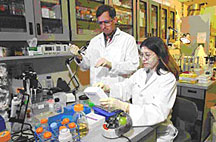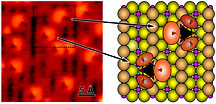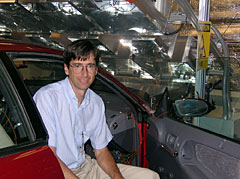| Research
|
As task leader for DOE's National Renewable Energy Laboratory's Vehicle Ancillary Loads Reduction (VALR) project, John Rugh is helping to reduce fuel consumption and tailpipe emissions in light-duty vehicles while maintaining passenger comfort. “Our overall goal is to develop and evaluate technologies that will reduce automobile air conditioning fuel use and the amount of imported crude oil,” Rugh said. Rugh is working with the automotive industry on ways to predict and reduce air conditioning loads. By incorporating such technologies as solar reflective glass and paint, it is possible to reduce thermal loads on the air conditioner, thereby reducing fuel consumption without compromising comfort. “If a car's air conditioner is used less often or can be downsized, car owners could see savings at the pump,” Rugh said. Maintaining passenger comfort is a key requirement to the ancillary loads reduction effort and Rugh's team has developed several thermal comfort tools. One tool is the ADvanced Automotive Manikin (ADAM), a manikin controlled by a physiological model of the human body to respond to changes in the environment. This way of predicting human responses can be used in a variety of testing environments including automobiles, aircraft, military vehicles, flight suits and more. Another promising path to reducing air conditioner loads is to use waste heat generated by engines. The VALR team is investigating a number of heat-generated cooling technologies, including thermoacoustics. The thermoacoustic technique uses waste heat to generate sound. The sound waves cycling through then drive a heat pump to cool the car. Rugh joined NREL in 1998 as a member of the hybrid vehicle team working on such projects as vehicle thermal testing and prediction of human thermal comfort. Before coming to the Laboratory, he worked for 11 years at Lockheed Martin Astronautics on the Titan/Centaur Program. The jump from heat transfer research to vehicle research was easy for Rugh because of his desire to help reduce engine loads imposed by air conditioners. Submitted by DOE's National Renewable Energy Laboratory |
|||||||||||||||||||||||||||||
|
Check out the Office of Science's new Website.
|
LLNL joins nuclear
|
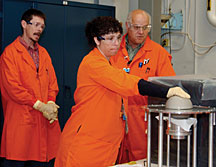 |
| With her gloved hand on a uranium test assembly, Barbara Krögfuss of Y-12 participates in a nuclear criticality training exercise with LLNL certified fissile material handler Nolan Lomba (right) as Mark Lee of the DOE Livermore Site Office looks on. |
DOE's Lawrence Livermore Lab now offers DOE national lab workers a unique nuclear criticality training course that until recently was only available at Los Alamos National Laboratory (LANL).
Criticality safety is an essential element in the training of National Nuclear Security Administration (NNSA) workers who handle or otherwise deal with special nuclear materials (SNM). However, in recent years, facility closures at other NNSA sites resulted in the elimination of the “hands-on” portions of the training. This negatively affected the quality of criticality safety training in the NNSA complex and was identified as such by the Defense Nuclear Facilities Safety Board.
So, last March, NNSA turned to Lawrence Livermore. In four months the nuclear criticality training curriculum was developed and approved, along with all the necessary facility modifications and safety considerations.
In August, the first group of lab workers to complete the course developed by Livermore staff received diplomas.
The initial class was comprised primarily of criticality safety professionals from LANL, Oak Ridge National Laboratory (ORNL) and Savannah River. Training modules included classroom sessions involving regulatory and safety issues, as well as several trips to LLNL's Superblock for hands-on experiments involving fissile materials, supervised by senior LLNL certified material handlers.
In addition, participants dealt with a criticality accident scenario. “We usually focus most of our attention on accident prevention. But we also need to keep in mind how to deal with the unexpected, if it were to happen,” said Dave Heinrichs, LLNL Criticality Safety Section project co-leader and course instructor.
The Criticality Safety Section designed the technical content and experiments, and taught the courses. LLNL's R Division contributed neutron detection expertise and the detection devices. The Nuclear Materials Technology Program provided the technical and operational support needed to conduct the hands-on portion of the class.
Beginning in FY07, the class will be offered monthly.Submitted by DOE's
Lawrence Livermore
National Laboratory
